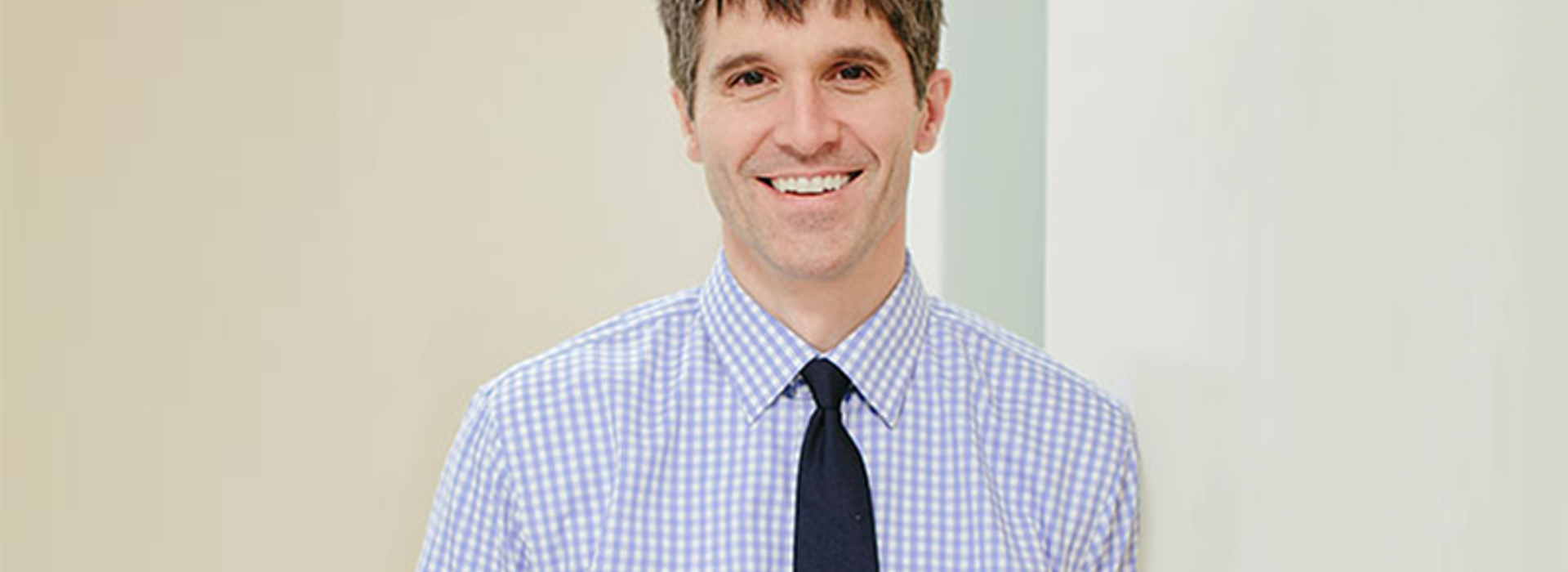
"Double Gopher" discovers T2* Mapping Reduces Need for Diagnostic Surgery, Provides Precise Results
Patrick Morgan, MD, is a “double gopher” who completed both medical school and residency at the University of Minnesota.
“I was lucky enough in medical school to be paired with an orthopaedist, and was hooked more or less from the minute I saw what ortho was all about,” Morgan recalls.
He now serves as an assistant professor in the University of Minnesota Department of Orthopaedic Surgery and has been involved in research evaluating articular cartilage of the joint. Morgan’s most recent article, “T2* Mapping Provides Information That Is Statistically Comparable to an Arthroscopic Evaluation of Acetabular Cartilage,” was published in Cartilage 2017.
“We are trying to solve one of the primary problems in the field: how you objectively evaluate the articular cartilage of a joint. This is important because right now, we simply don’t have a way to measure when a painful joint is in good enough shape to be surgically preserved or when the joint should be replaced,” Morgan explained.
“It’s a decision point that is really at the center of the profession and it’s one that frequently goes wrong,” he added.
Currently, the most accurate method to determine if cartilage can be preserved or needs replacement is to do a diagnostic arthroplasty. This involves anesthetizing the patient, making a small incision, and inserting a tiny camera attached to a rod to examine the cartilage. While this procedure provides a great deal of information, it is inherently subjective and is rarely used because of its risk and expense. Morgan’s research suggests there may be an alternative.
“We found that an inexpensive, non-invasive MRI sequence that can be done on a regular clinical scanner provides information that is just as accurate, but also quantifies it with a number that can be used to do scientific studies to improve patient care. All without any of the risks associated with surgery,” Morgan said.
Validating a new test — in this case an imaging test of cartilage quality — is a multi-step process.
“In this paper, we built on several years’ worth of research and previous publications to finally show definitively that T2* mapping is every bit as good as surgical examination of the joint, with the added benefit of putting a number on it. It was the final step needed before using the technology in a clinical outcomes study,” Morgan said.
What is T2* mapping? Morgan explains that it can be broken down into three parts. The T2 represents one of the standard MR sequences that has been used for generations, and it examines the detectable loss of coherence after a 90-degree pulse. T2 is also very good at showing pathology.
The “star” (*) is a specific type of the T2 sequence that leaves inhomogeneous results in the final image. Inhomogeneous images are produced not only from the MRI machine itself, but also from the machine detecting bone, which is useful because articular cartilage rests on very dense bone.
“When you leave these inhomogeneities in, you start to see all kinds of interesting things, such as the layers in the articular cartilage. It turns out that is very useful,” Morgan noted.
Finally, mapping involves where these values are being measured. Each voxel on an MR (each little dot) is a number or data point. This technique maps that voxel anatomically. T2* mapping not only produces cartilage information that isn’t otherwise available, but supplies quantified information that has a precise location.
“The MR imaging protocol is robust and non-invasive,” added Jutta Ellermann, MD, a co-investigator and assistant professor in the Department of Radiology. “The cartilage sequence is readily available on all MRI scanners and could be used as an add-on to routine clinical imaging providing more detailed and quantitative information for pre-surgical planning.”
Currently, Morgan and his team are working on an NIH grant to plan a long-term patient outcomes study using cartilage change measured with T2* mapping as one of the primary variables.
“T2* is the first tool that’s been validated to do this not only at an academic center, but out in the community as well, so the potential to improve patient care is great,” Morgan said.



